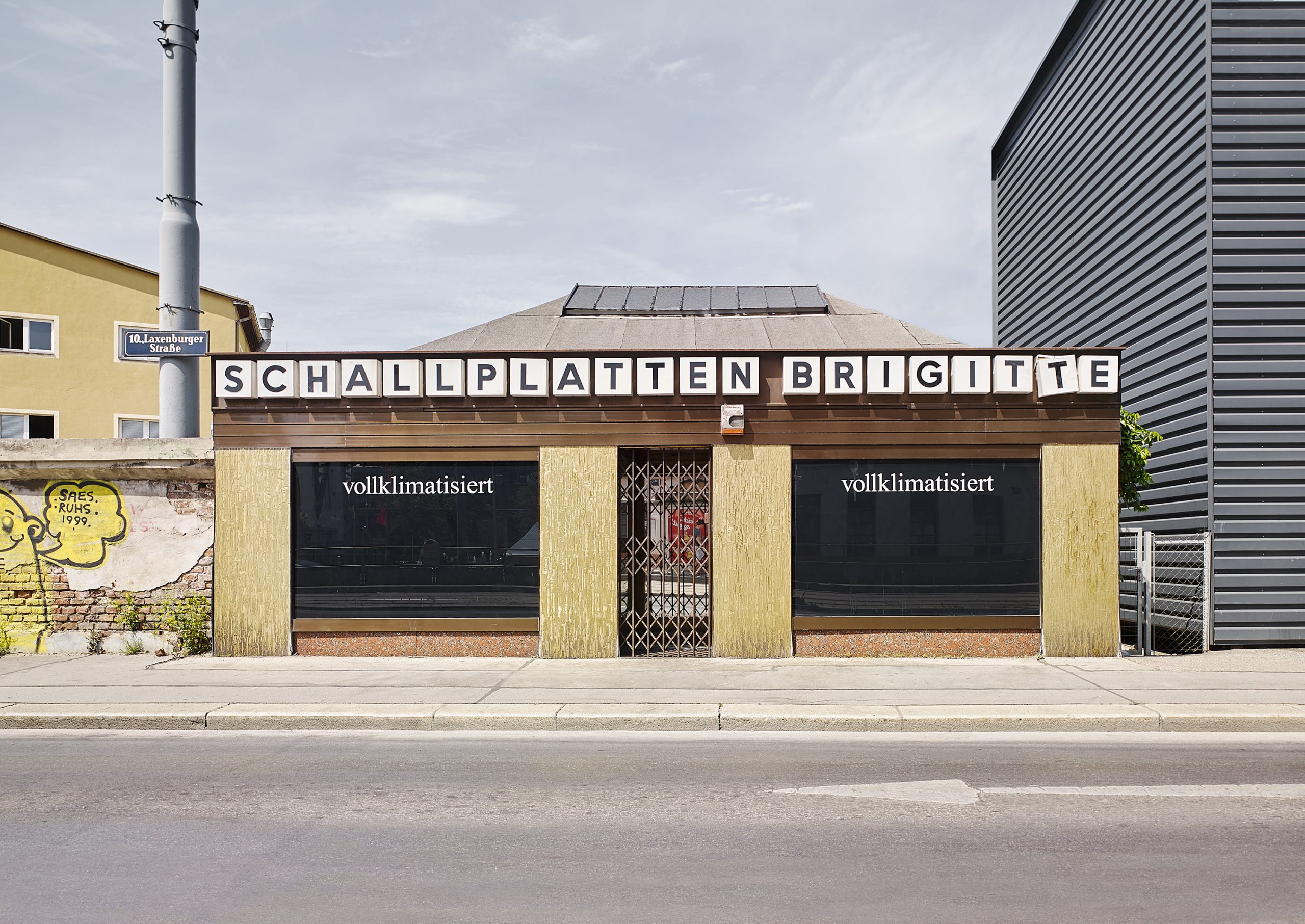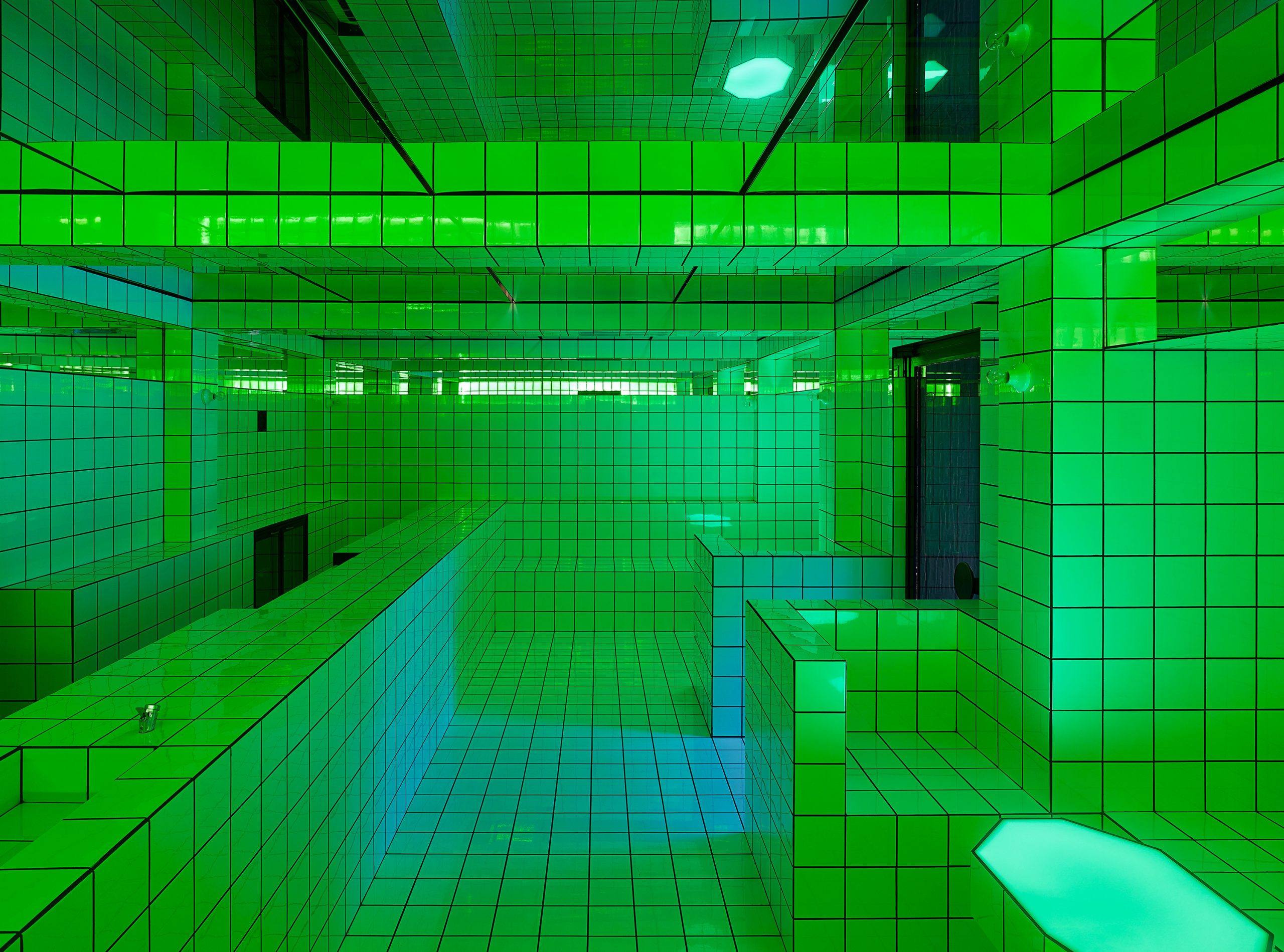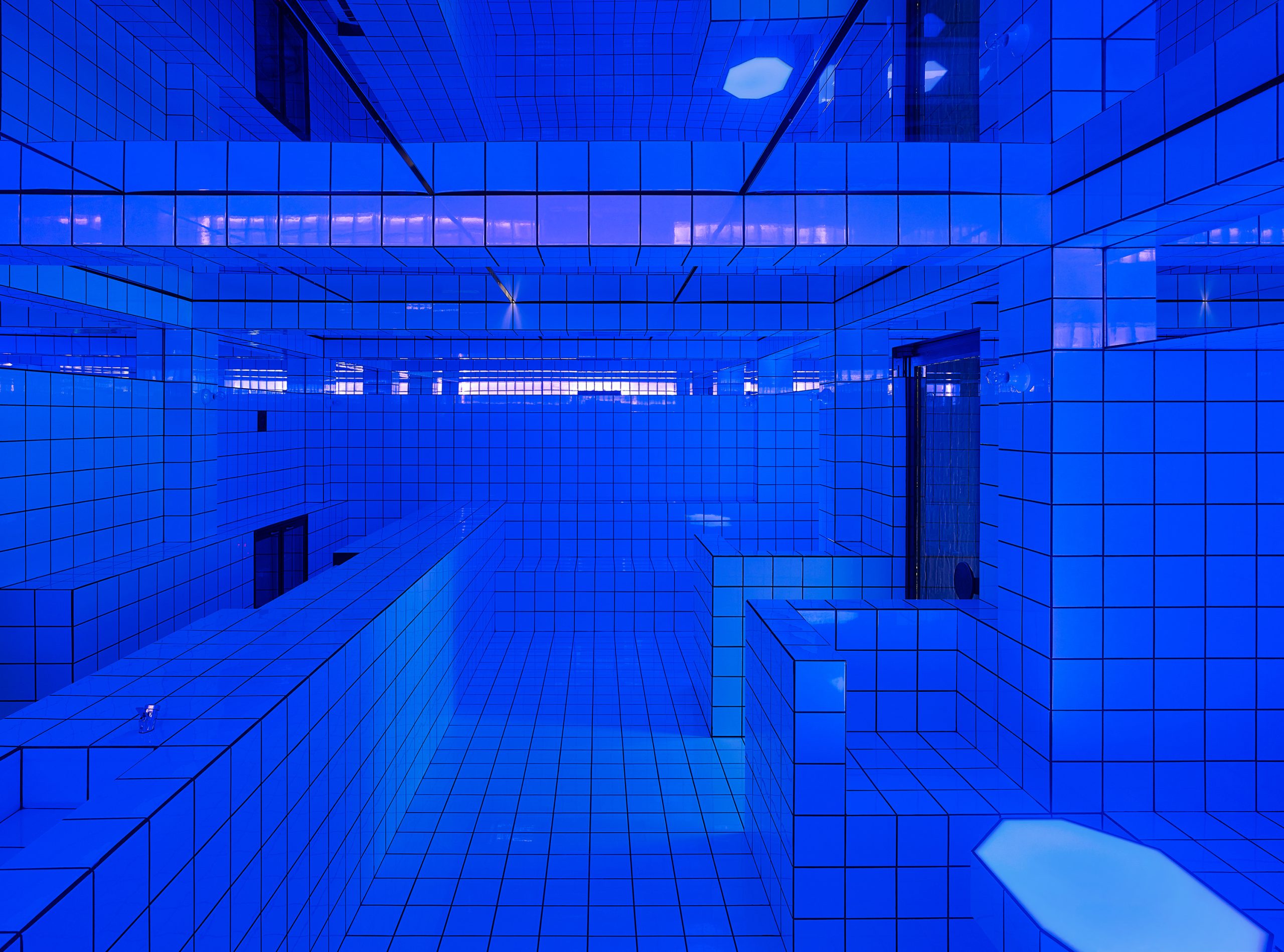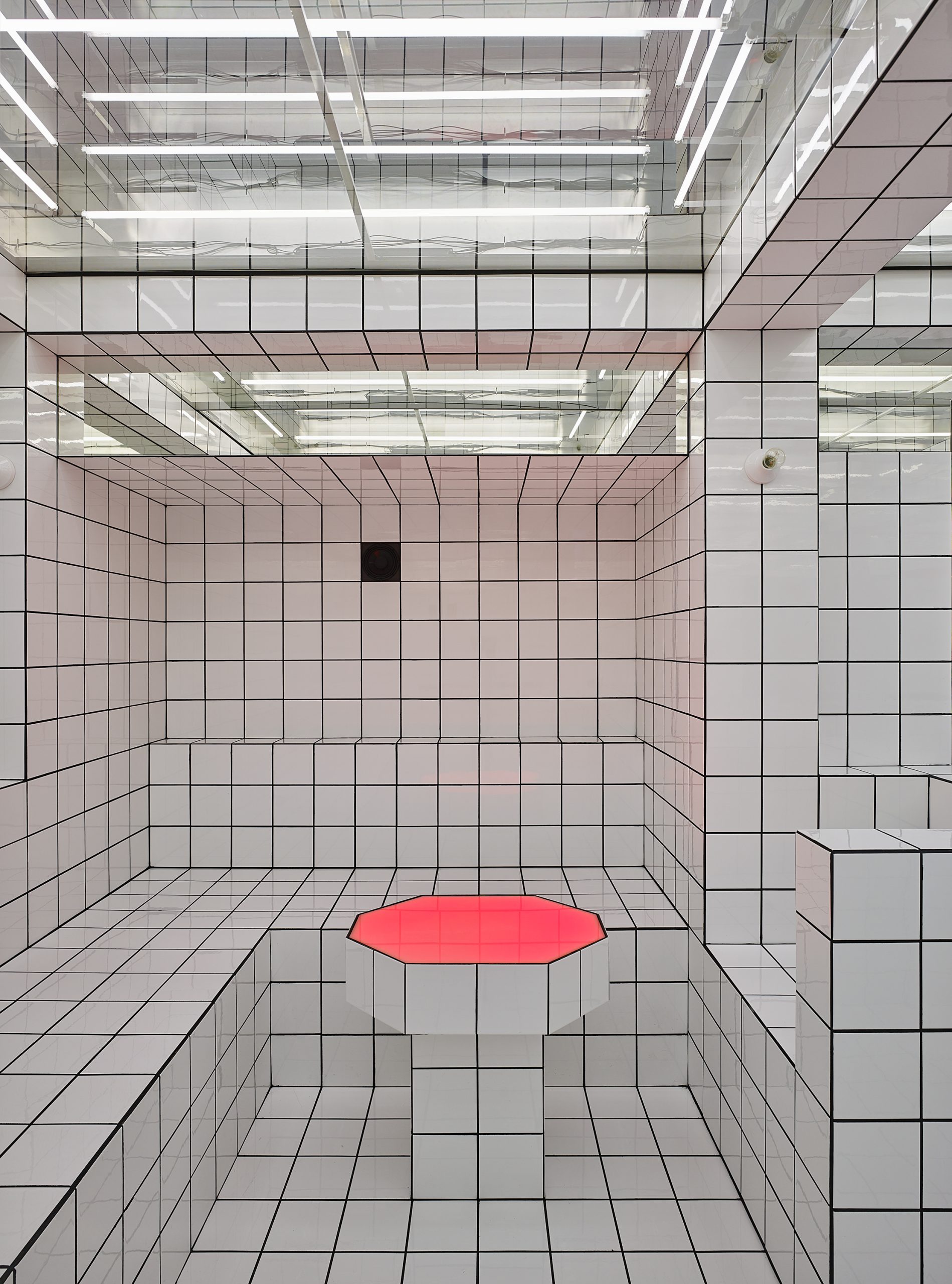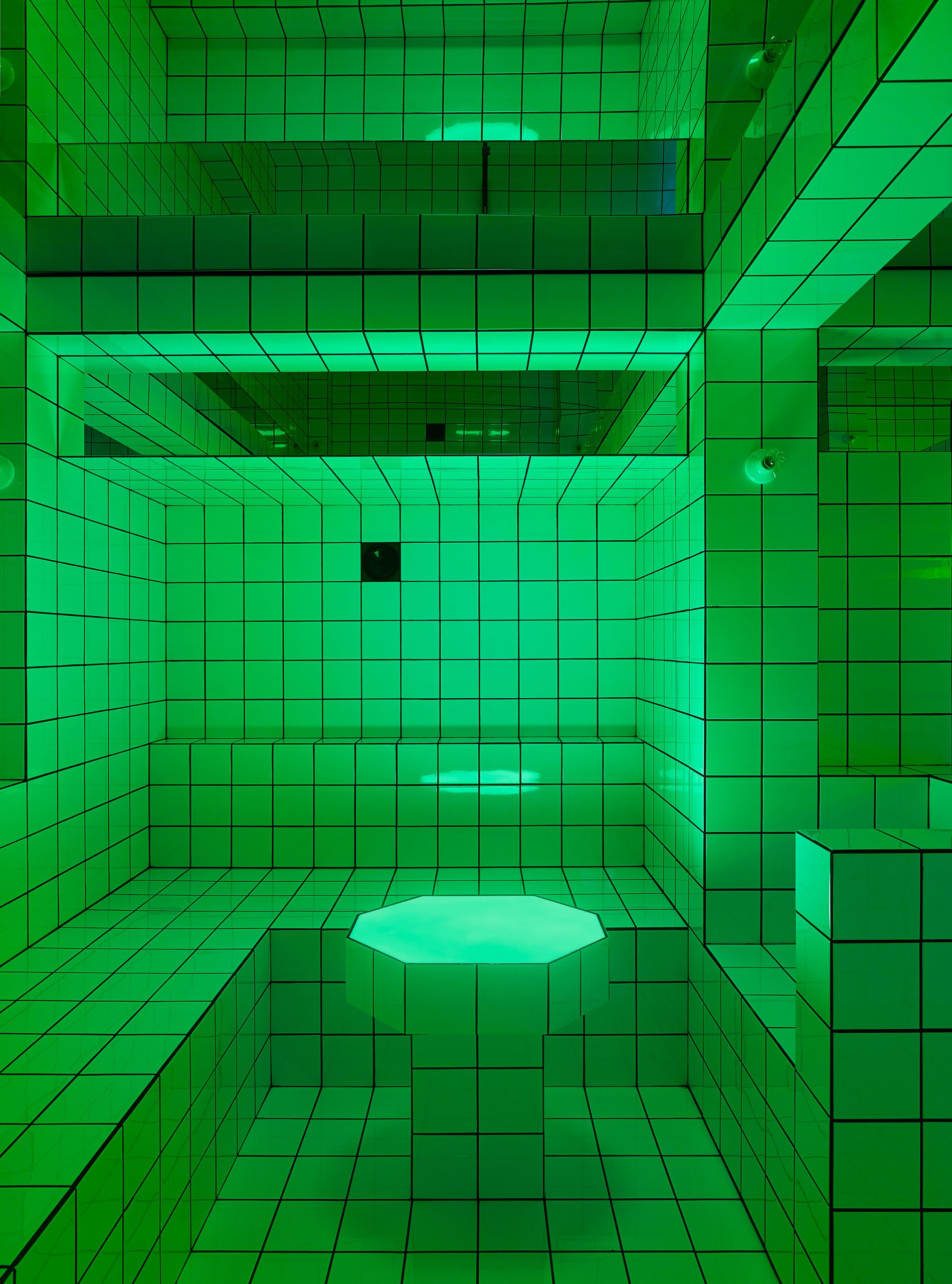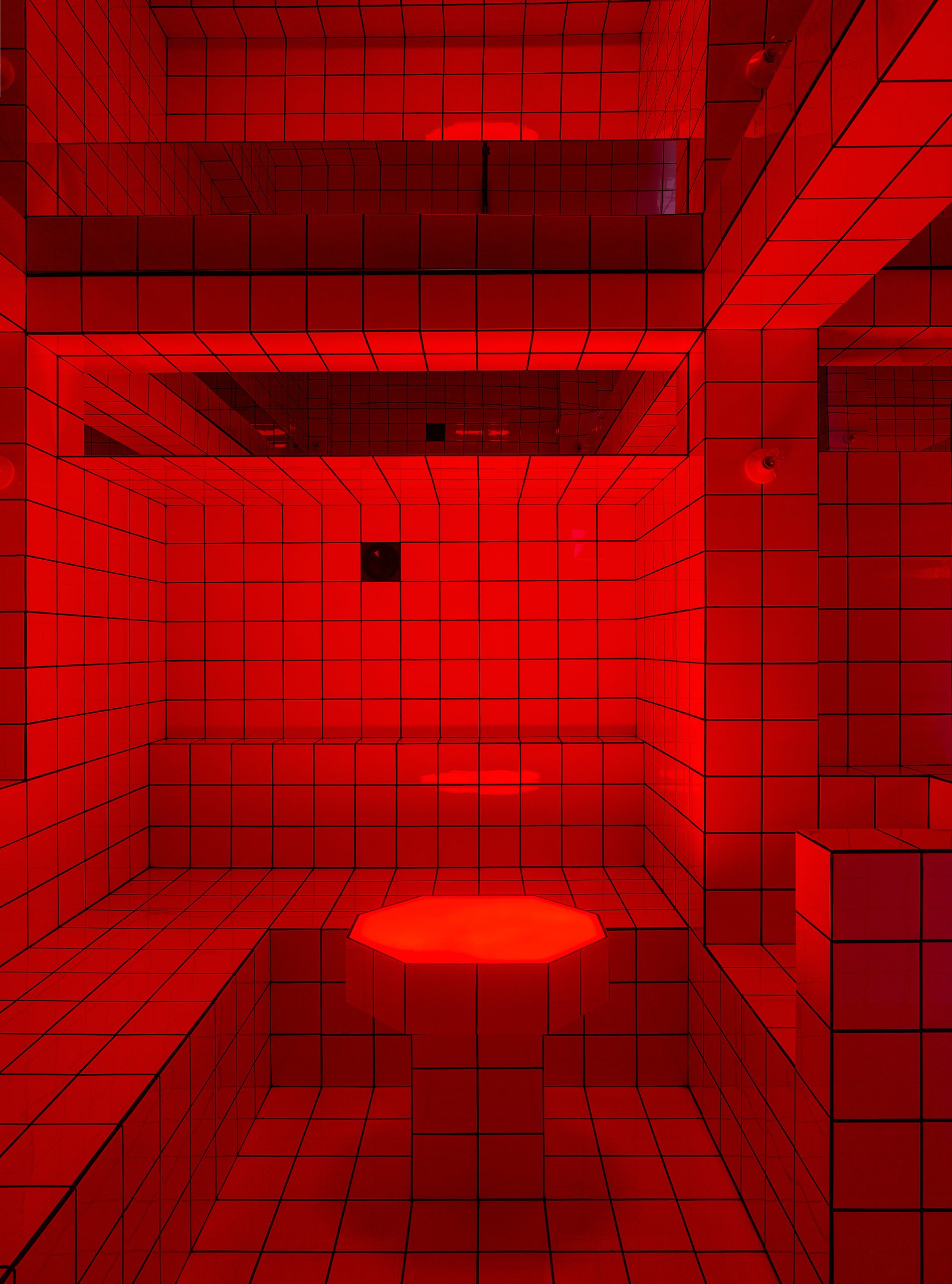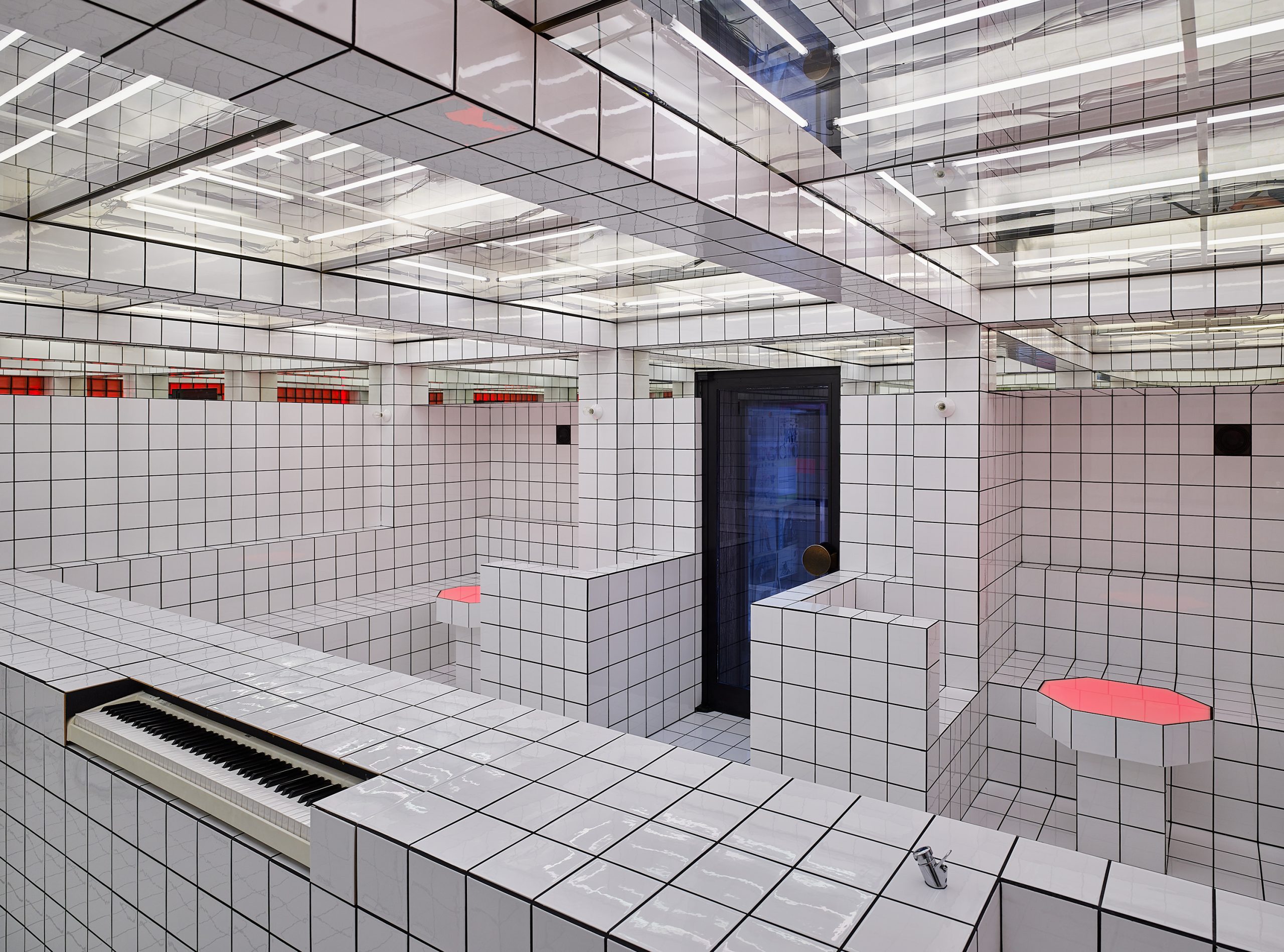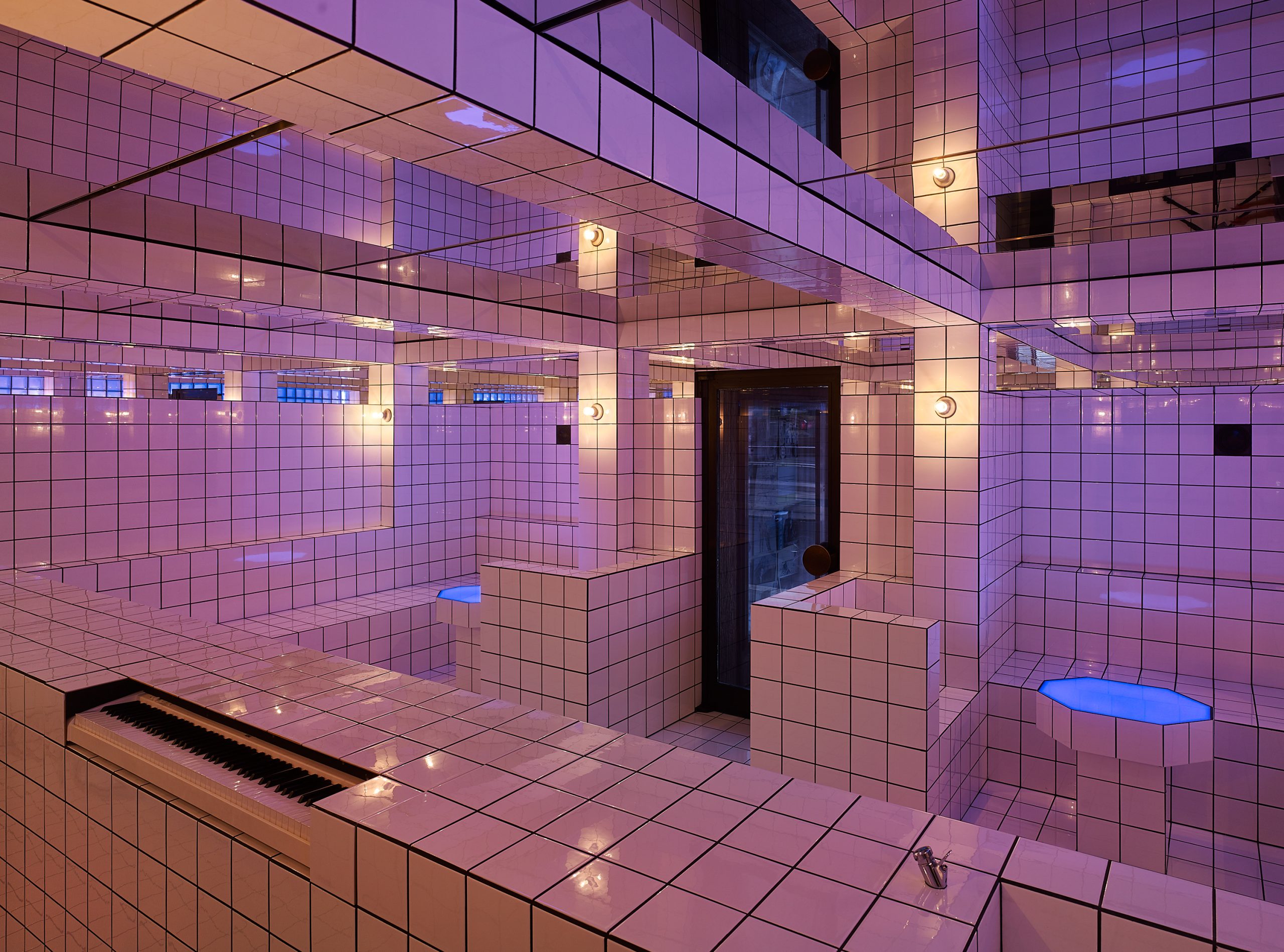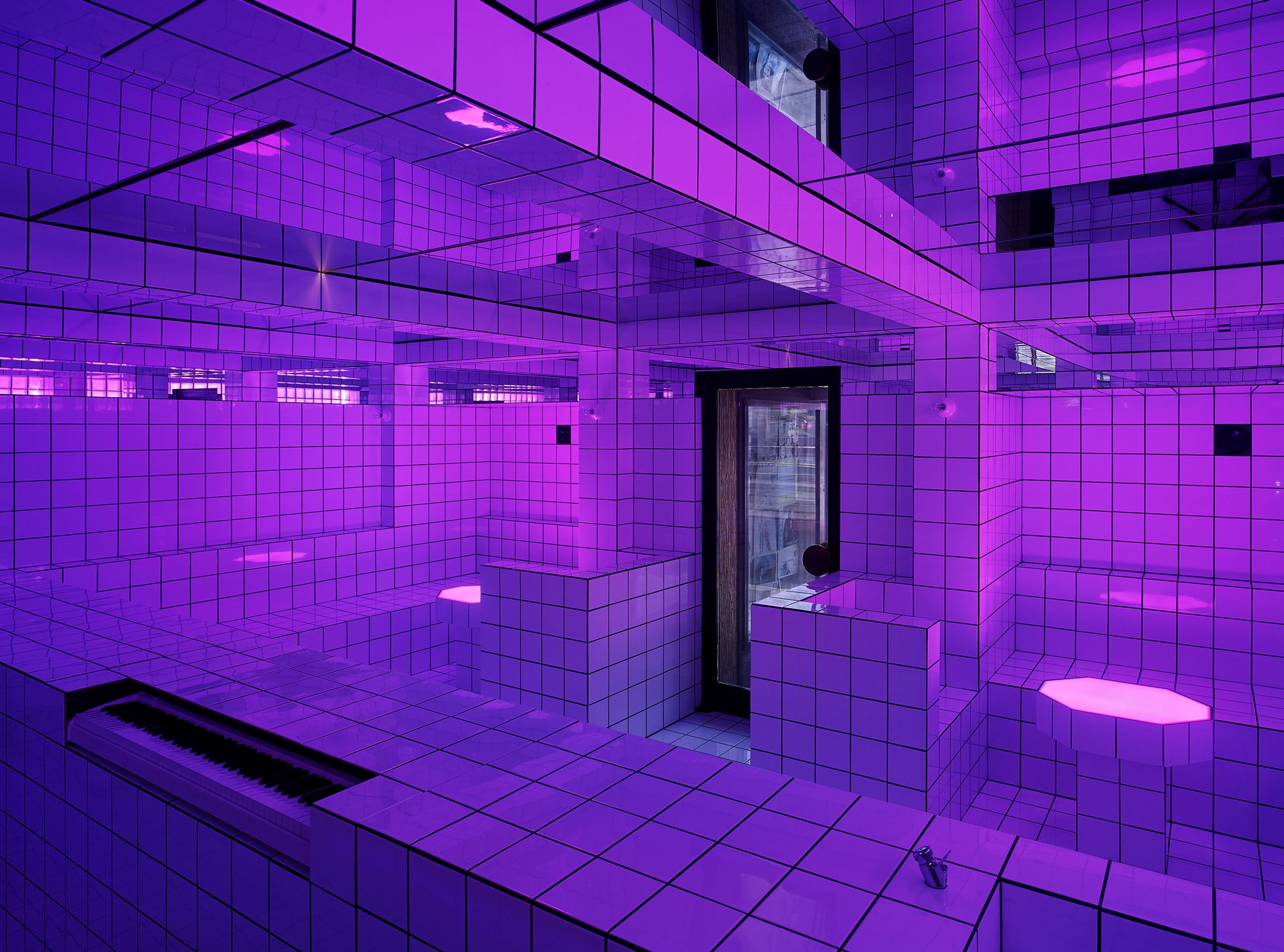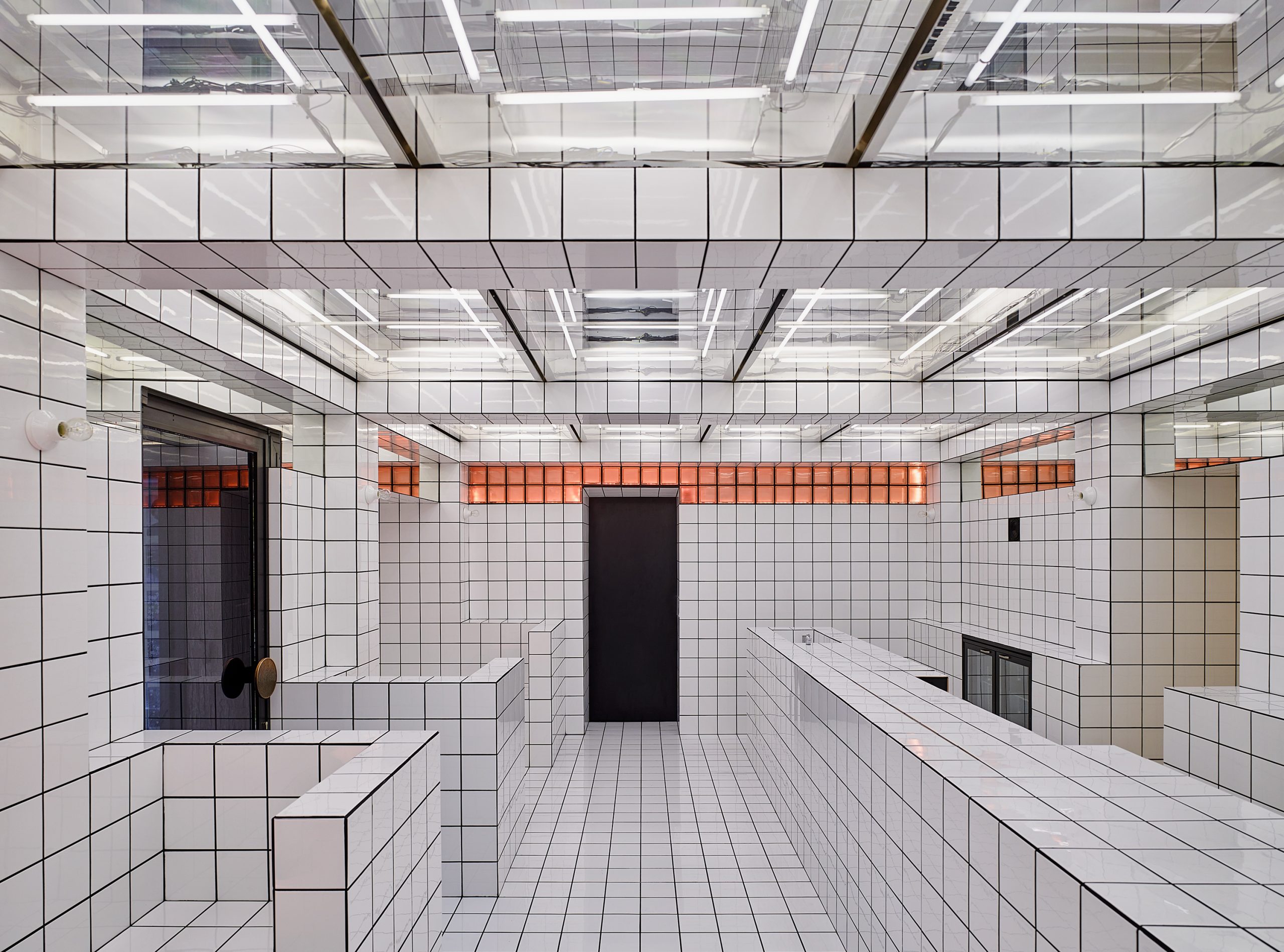Lax Bar
Christoph Meier, Ute Müller, Robert Schwarz, Lukas Stopczynski – Vienna, Austria
Walk-in Art Installation | Wiener Festwochen
The square is the foundation of a regular geometric grid. In 1908, Adolf Loos used the equilateral rectangle to highlight the orthogonal orientation of the interior of his so-called Kärntner Bar, the first American-style bar in Vienna. Originally conceived as a stand-up bar, the Loos Bar, as it is called today, is an urban interior, a social space transgressing class divisions and a condensed social stage. Adolf Loos believed that architecture goes beyond the functional to create resonating spaces for a liberal and democratic society. Consequently, for him, the language of architecture articulates itself not only through an abstraction of means, but also through recourse to everyday typologies. Things happen in places.
Designed by Christoph Meier, Ute Müller, Robert Schwarz and Lukas Stopczynski, the Lax bar, a copy of the Loos Bar, emphasizes this aspect of the social sculpture that turns viewers into actors.
In contrast to the original, however, it is a walk-in sculpture with a makeshift character and only officially operates five times. The Lax bar reduces architecture to its very essence and centers around a seemingly simple design that underlines the sheer impact of the material while at the same time rejecting the material opulence of Loos’ original version.
The bar’s displacement, its own temporality as a ‘different place’, is also celebrated. When the door to this inconspicuous building opens, the visitors, like Alice in Wonderland, fall down a kind of rabbit hole: They enter a completely white tiled room that could be anywhere, that seems different from the outside world and yet is part of it in a strangely displaced way.
A variation of the Loos Bar in terms of proportion and interior design, the Lax bar also makes use of mirrors as the basic form of pictures as a way of inscribing visitors into the architecture. While the side mirrors are mounted in such a way that one cannot see one’s reflection, the mirrored ceiling transforms the lively space into a mise en abyme, an infinite image within the image.
The Lax Bar is already the artists’ third edition of the legendary bar designed by Adolf Loos. In Los Angeles, the adaption of the Viennese architectural icon was obvious. A residency at the MAK Center for Art and Architecture in the Mackey Apartments of R.M. Schindler (a well-known student of Loos) inspired the creation of this first DIY-style replica of the bar in 2015. In a garage behind the modernist apartment building, marble became OSB, glass became mosquito mesh fabric, wood became cardboard.
In his 1979 essay “Der Loos-Gedanke” the Viennese architect Hermann Czech wrote that Loos’ rejection of ornament was primarily directed against those forms “that are not thought”. The abstract thought does not find translation into an abstract form, but a specific solution develops out of it.
This is perhaps the LAX bar’s closest correspondence to the Loos Bar: to translate the concept of a work of art as a social place into the format of a festival—via a sculptural intervention that rethinks the idea of social sculpture.
Text: Vanessa Joan Müller

